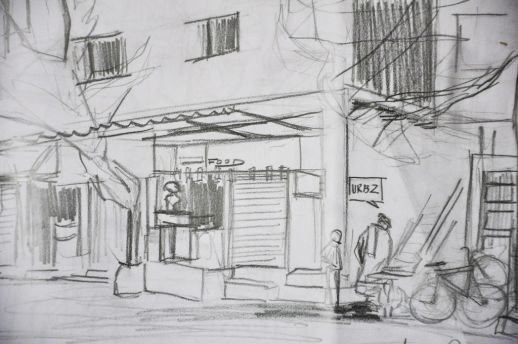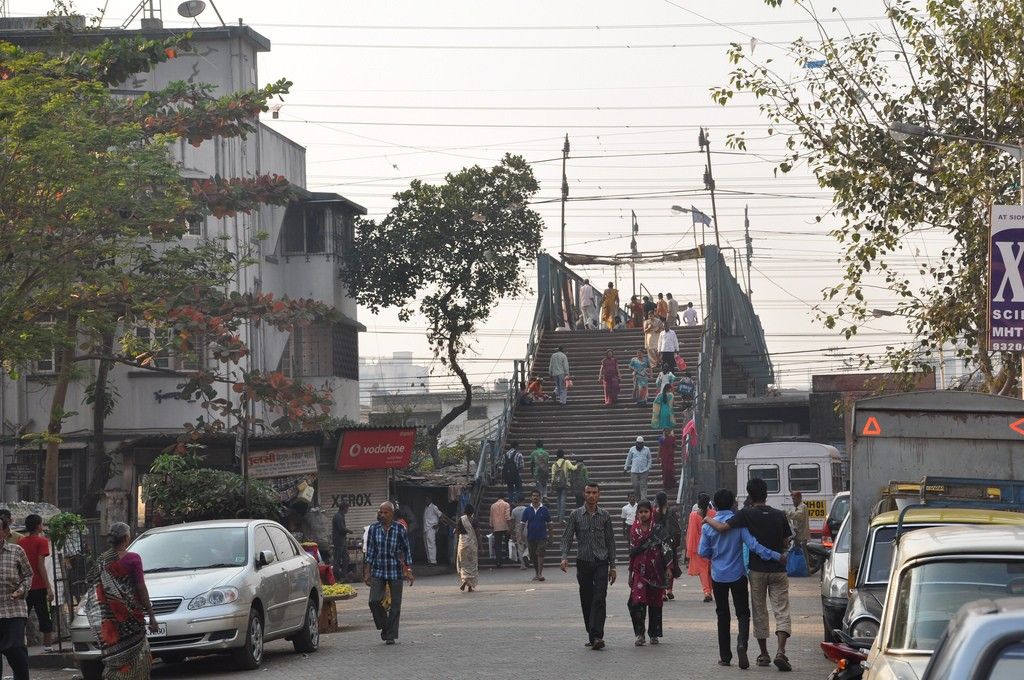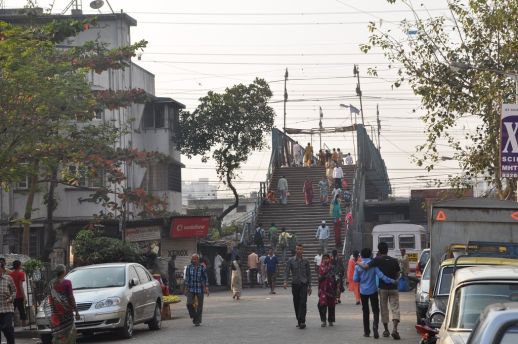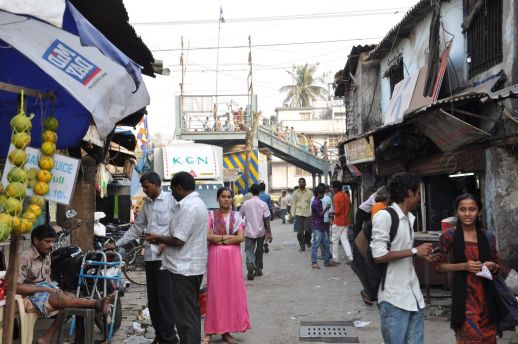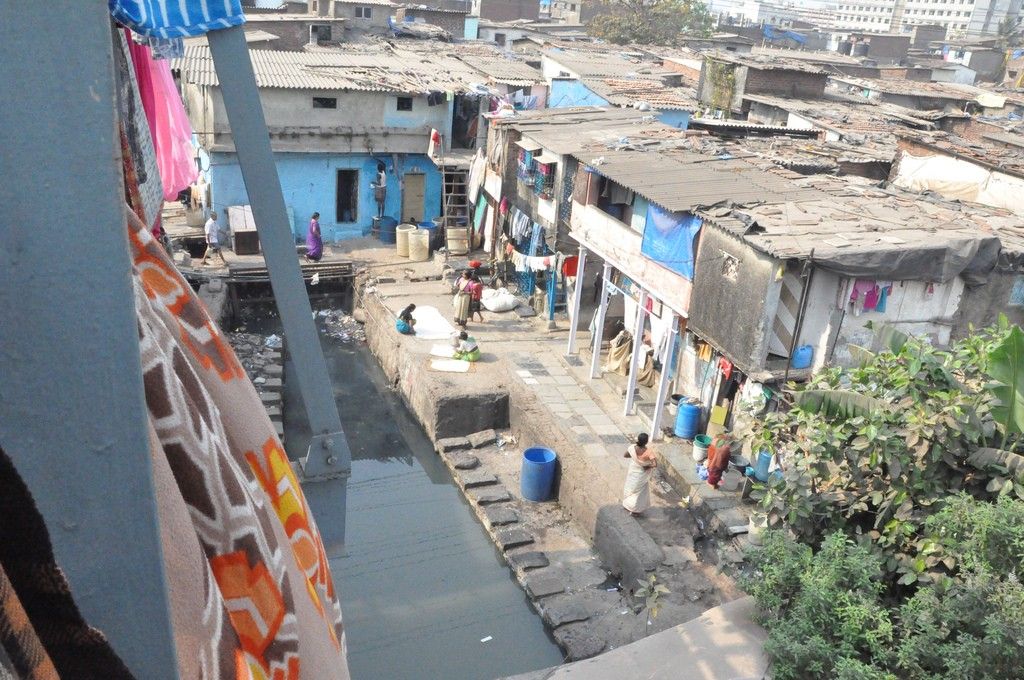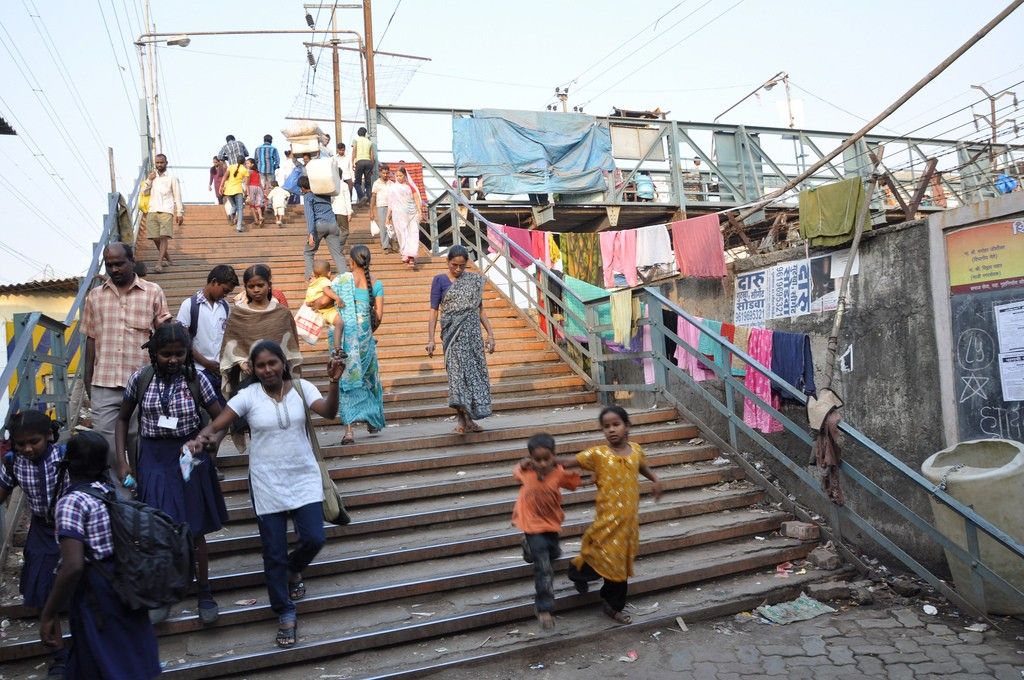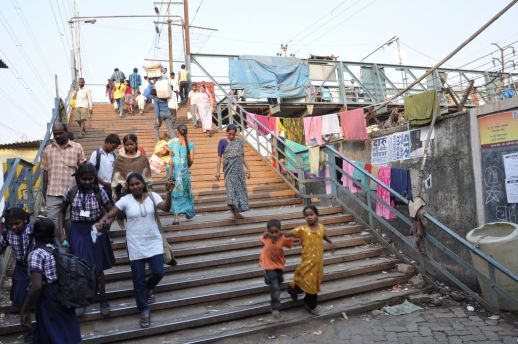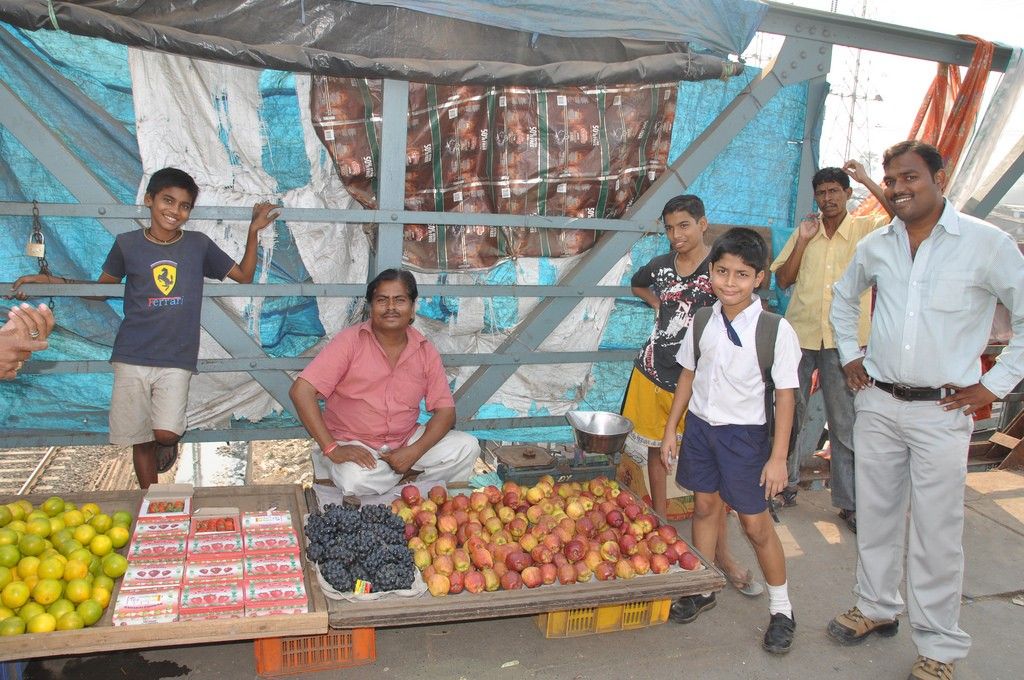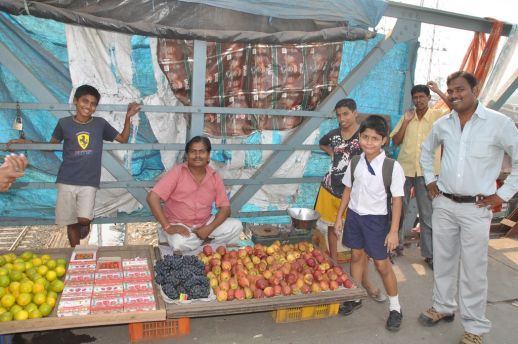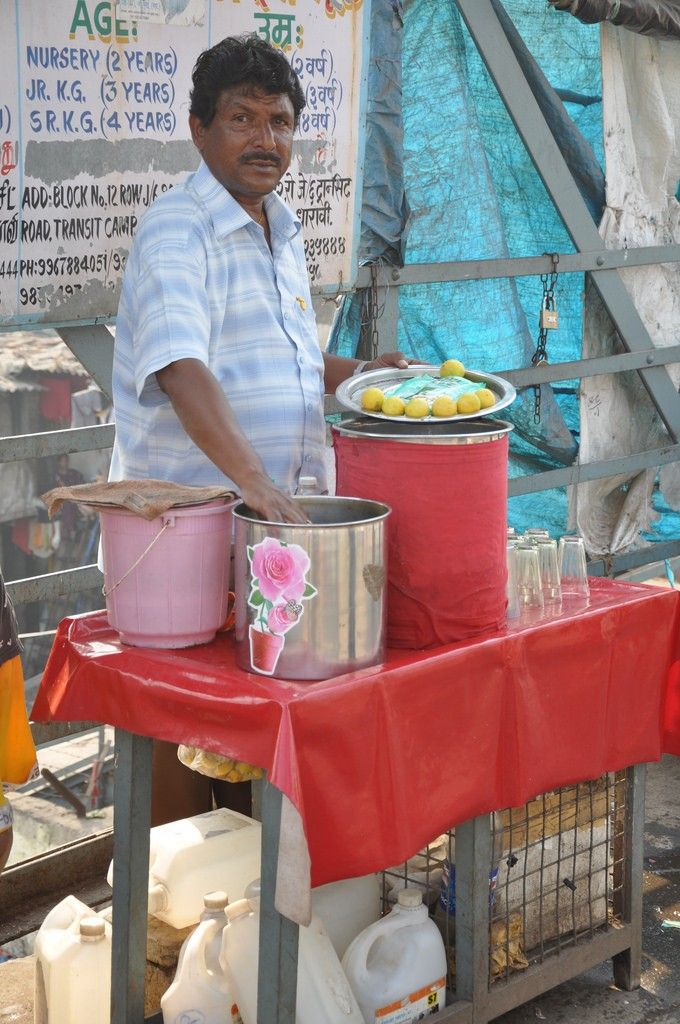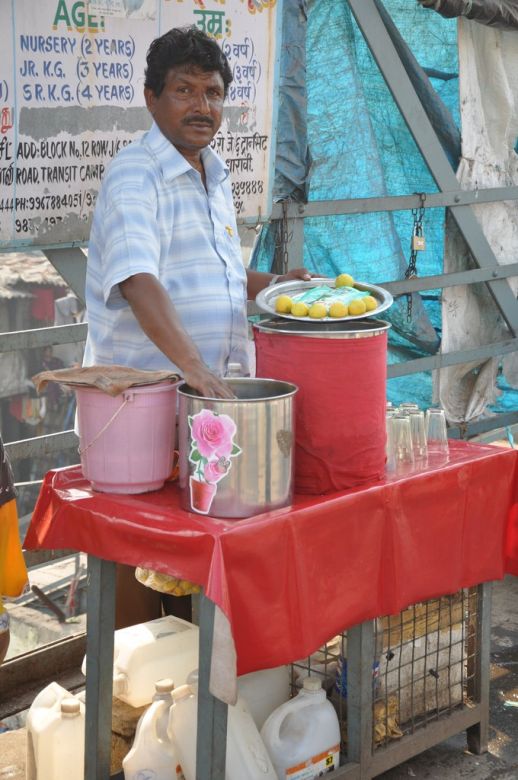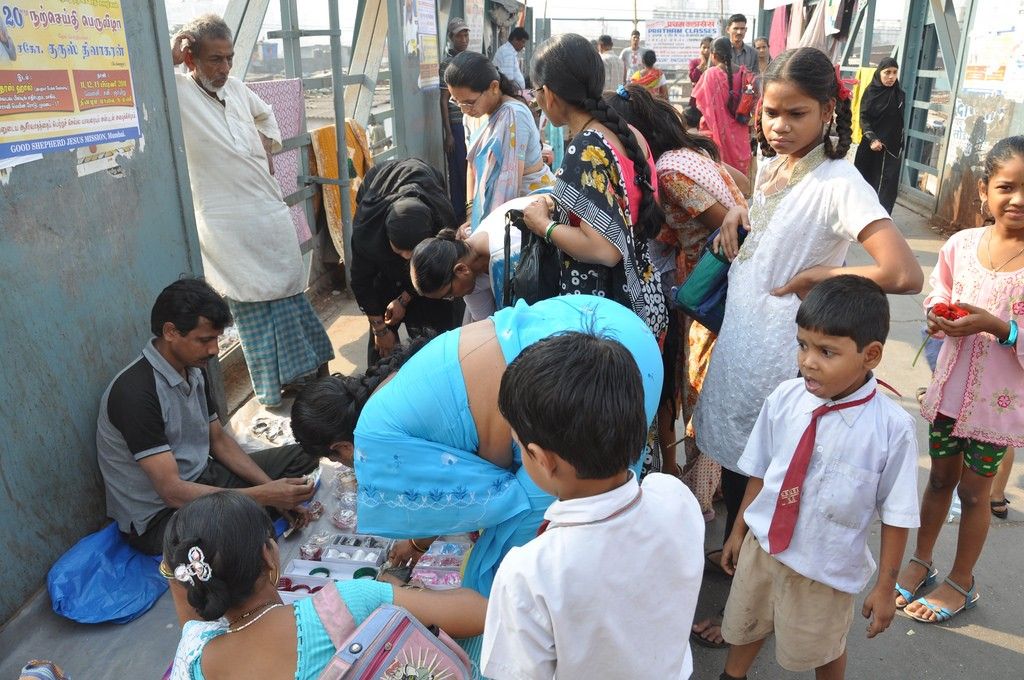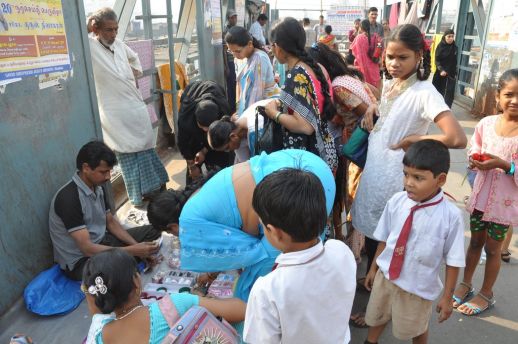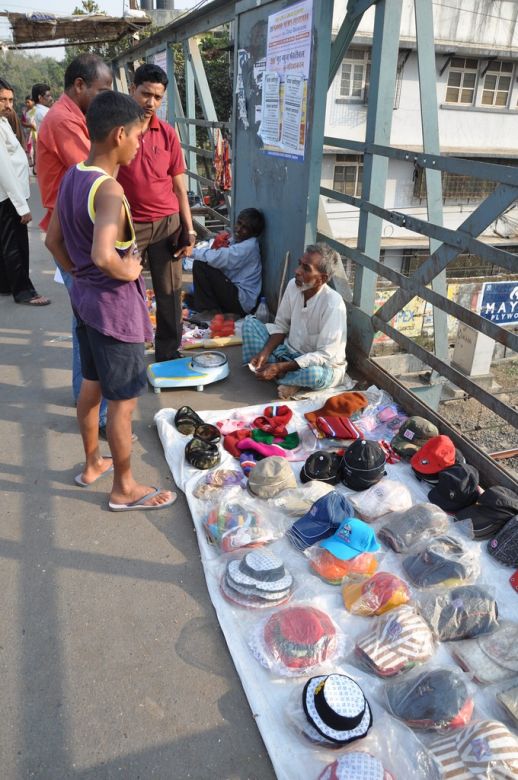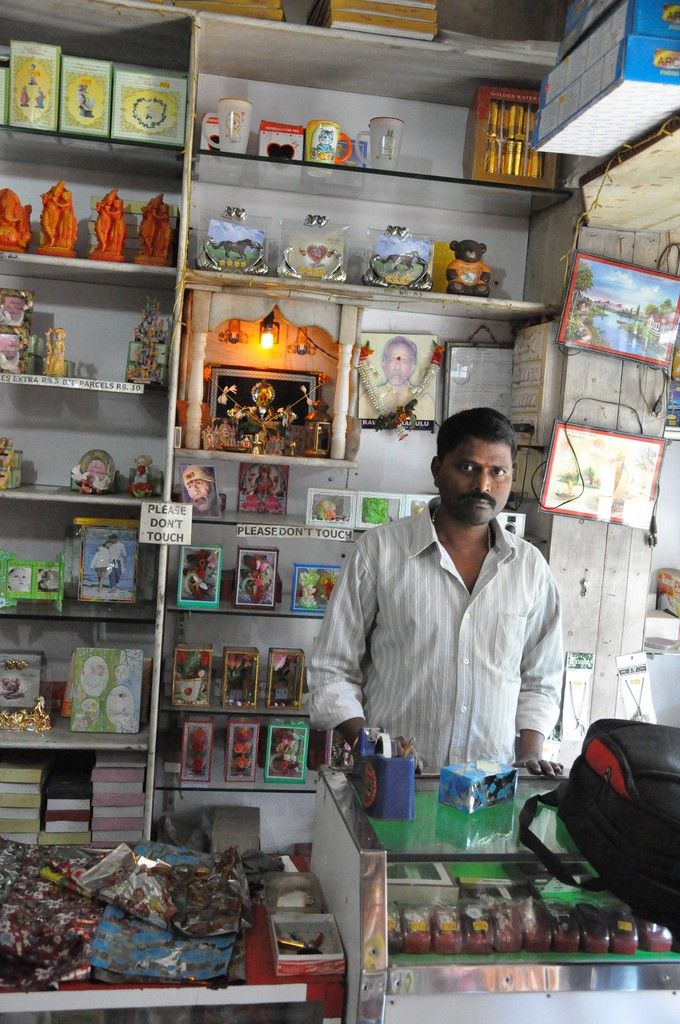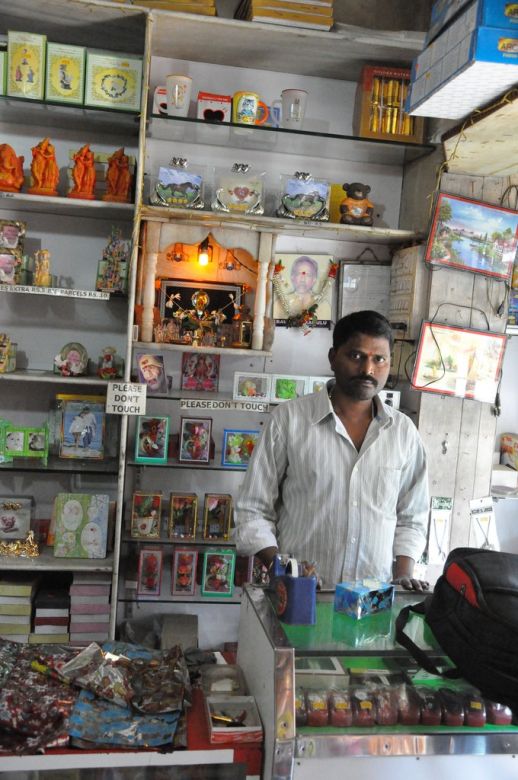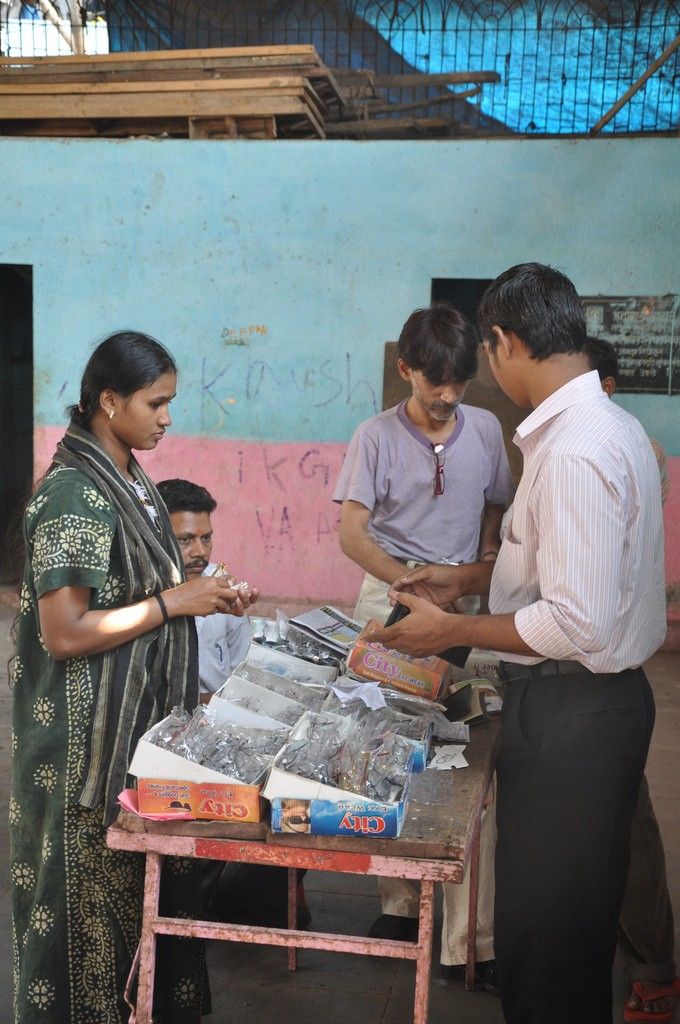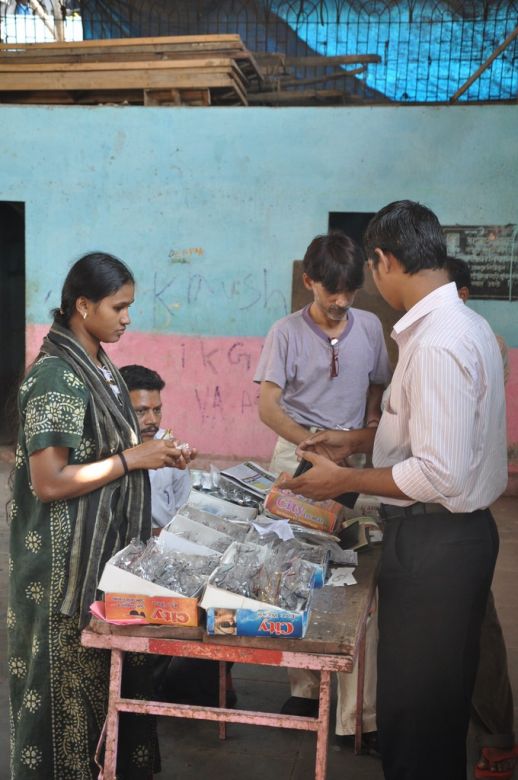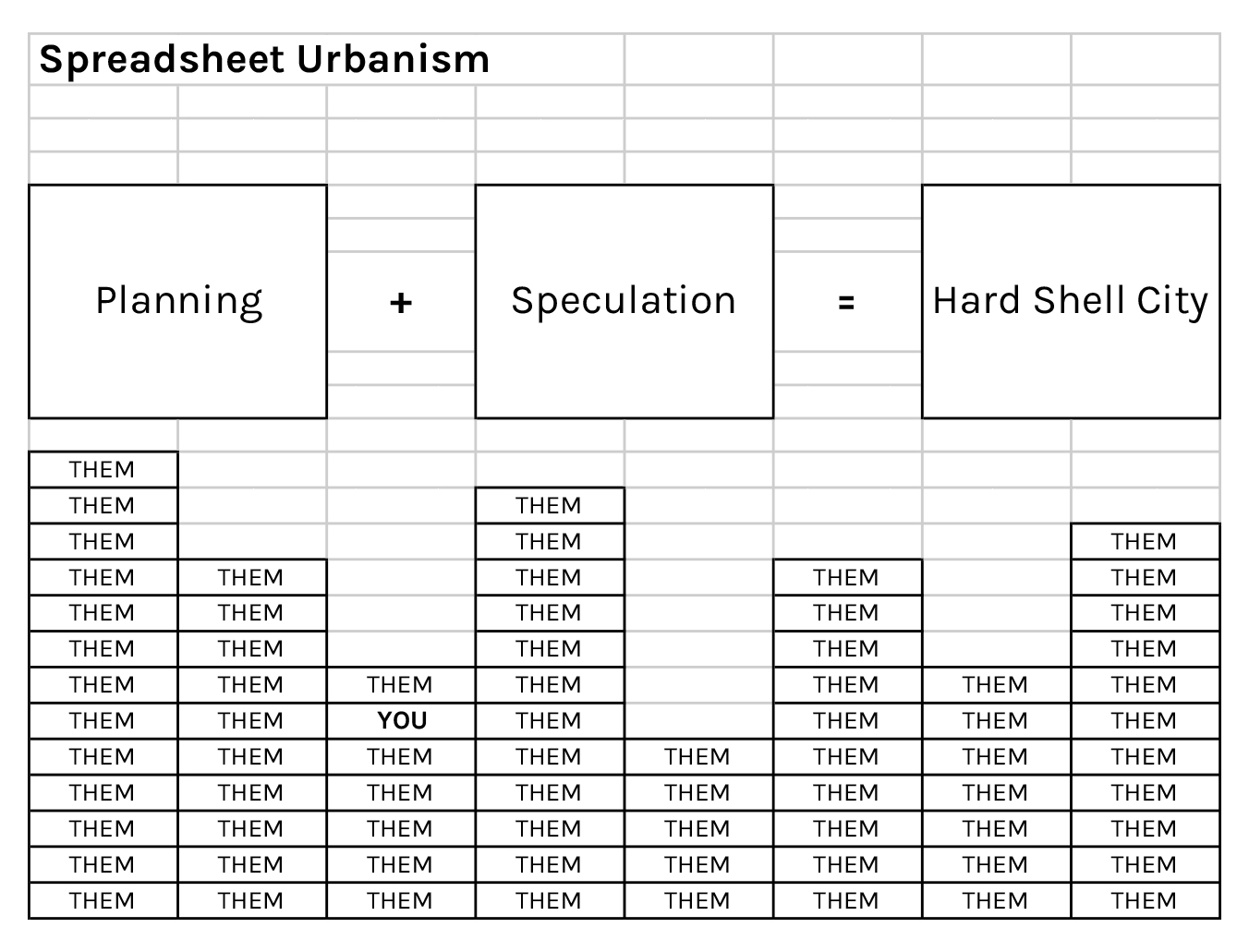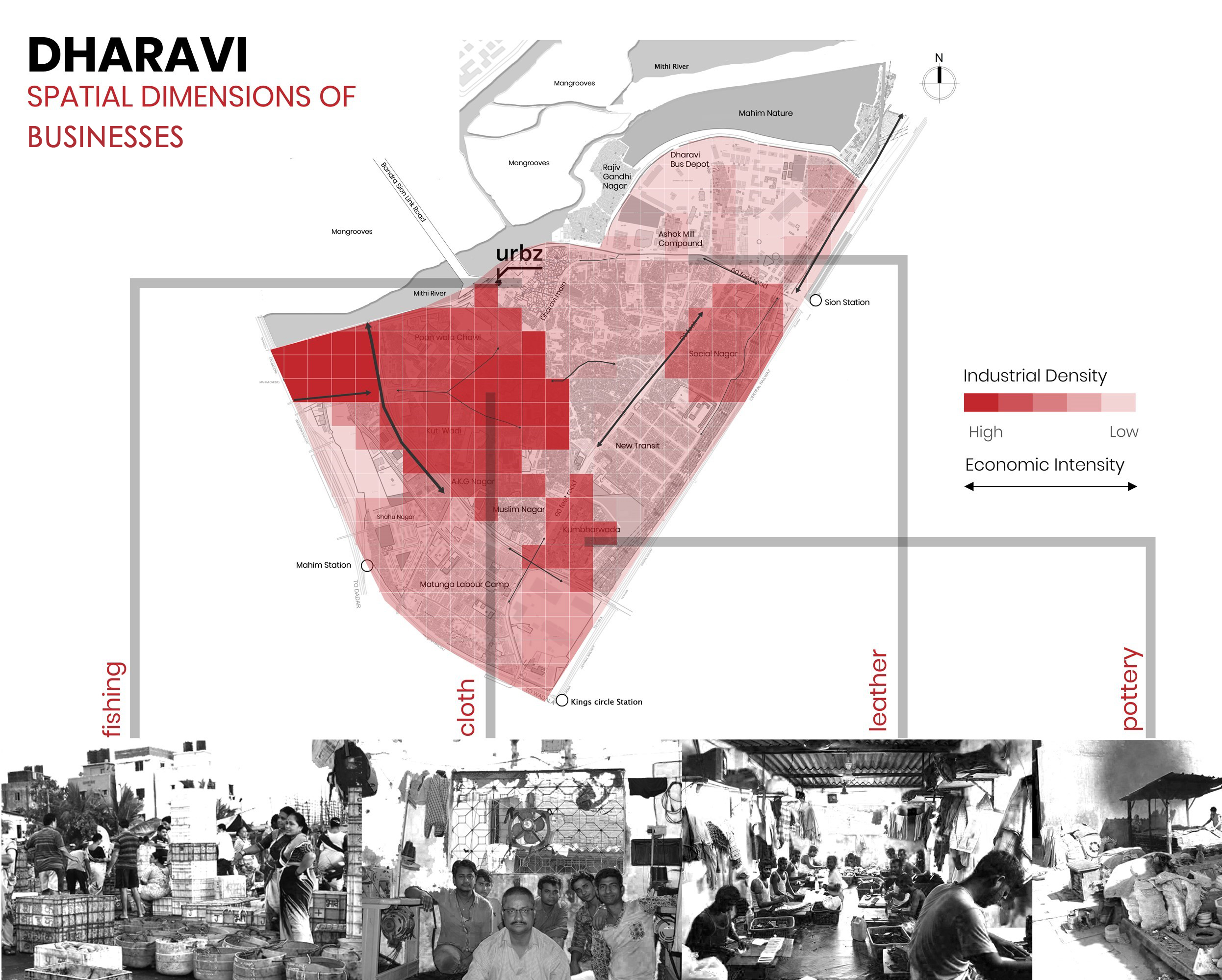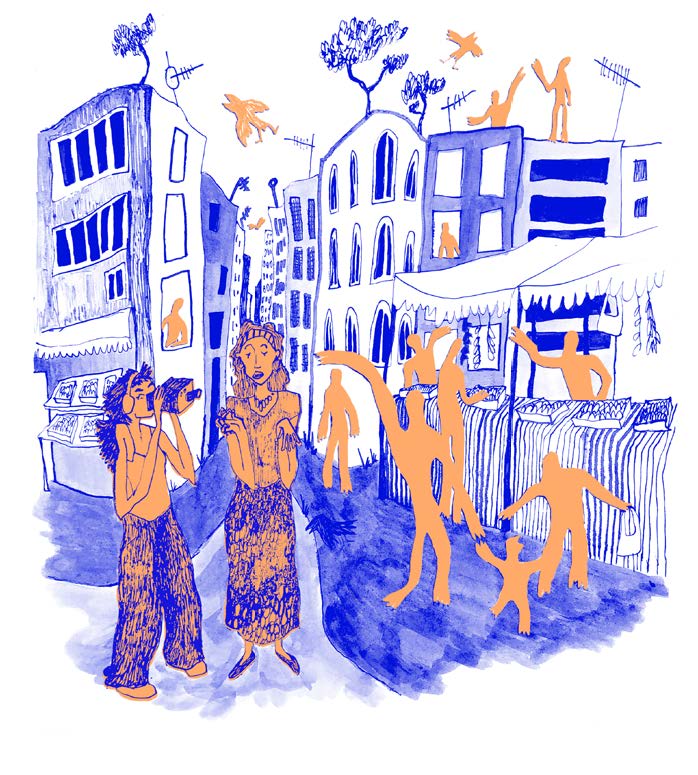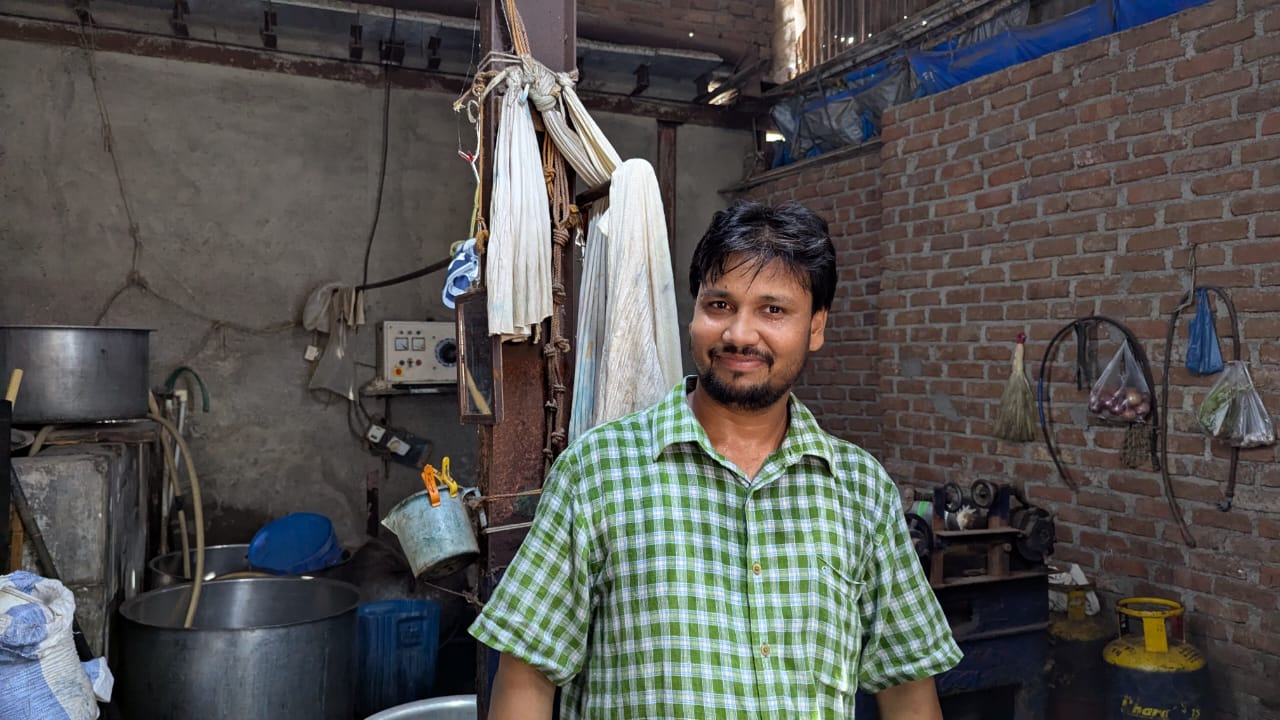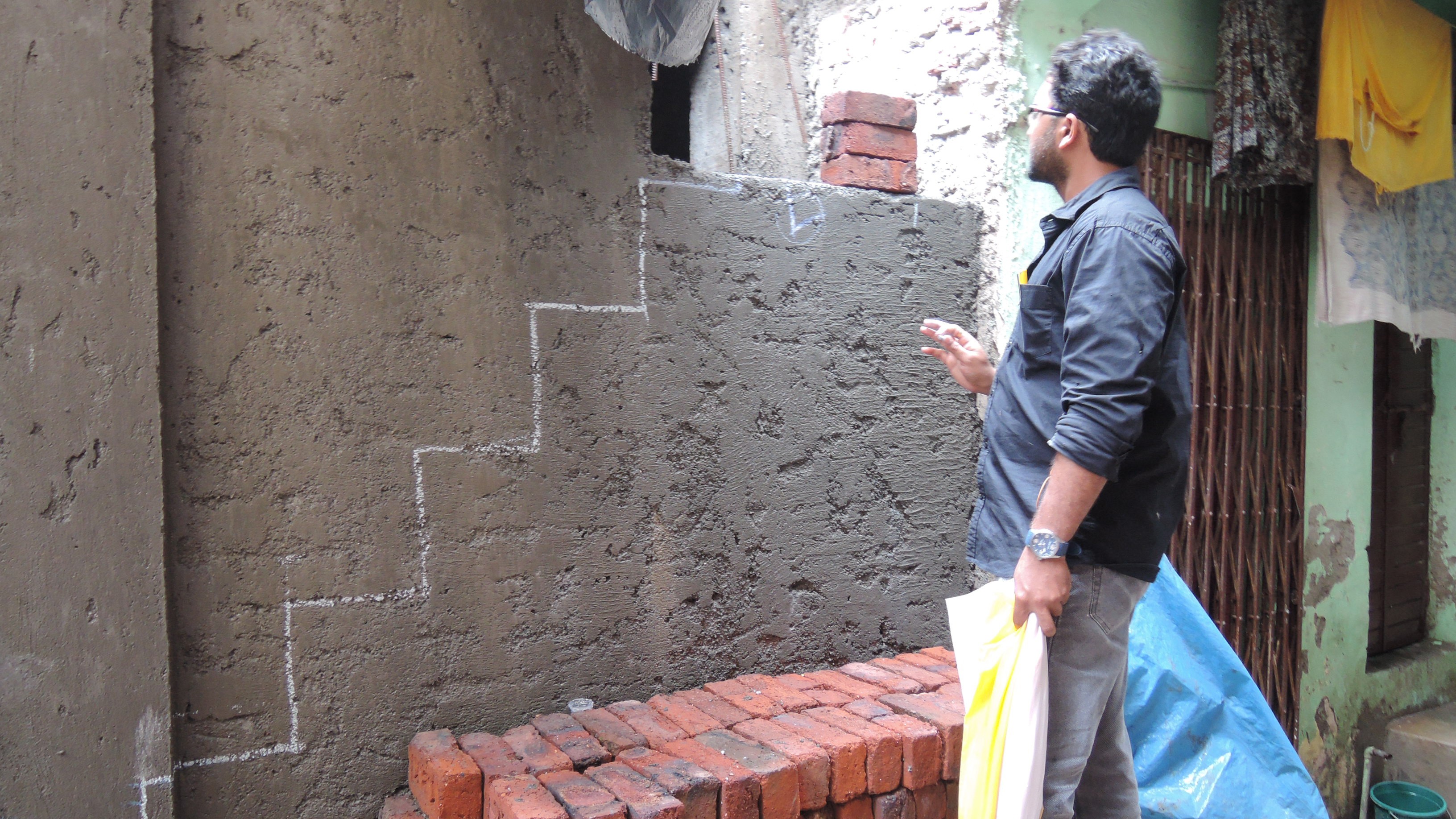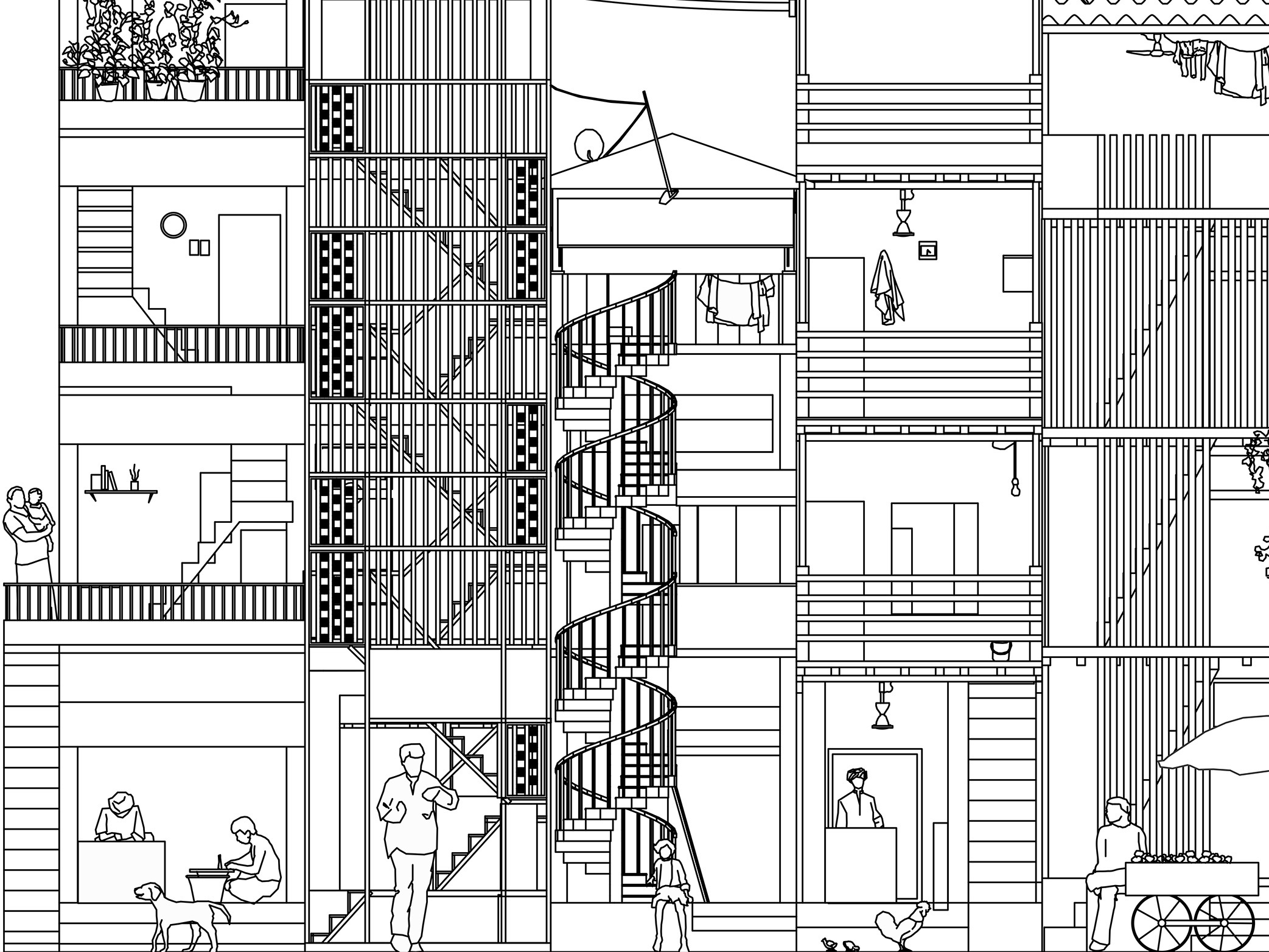It's not all about the Business
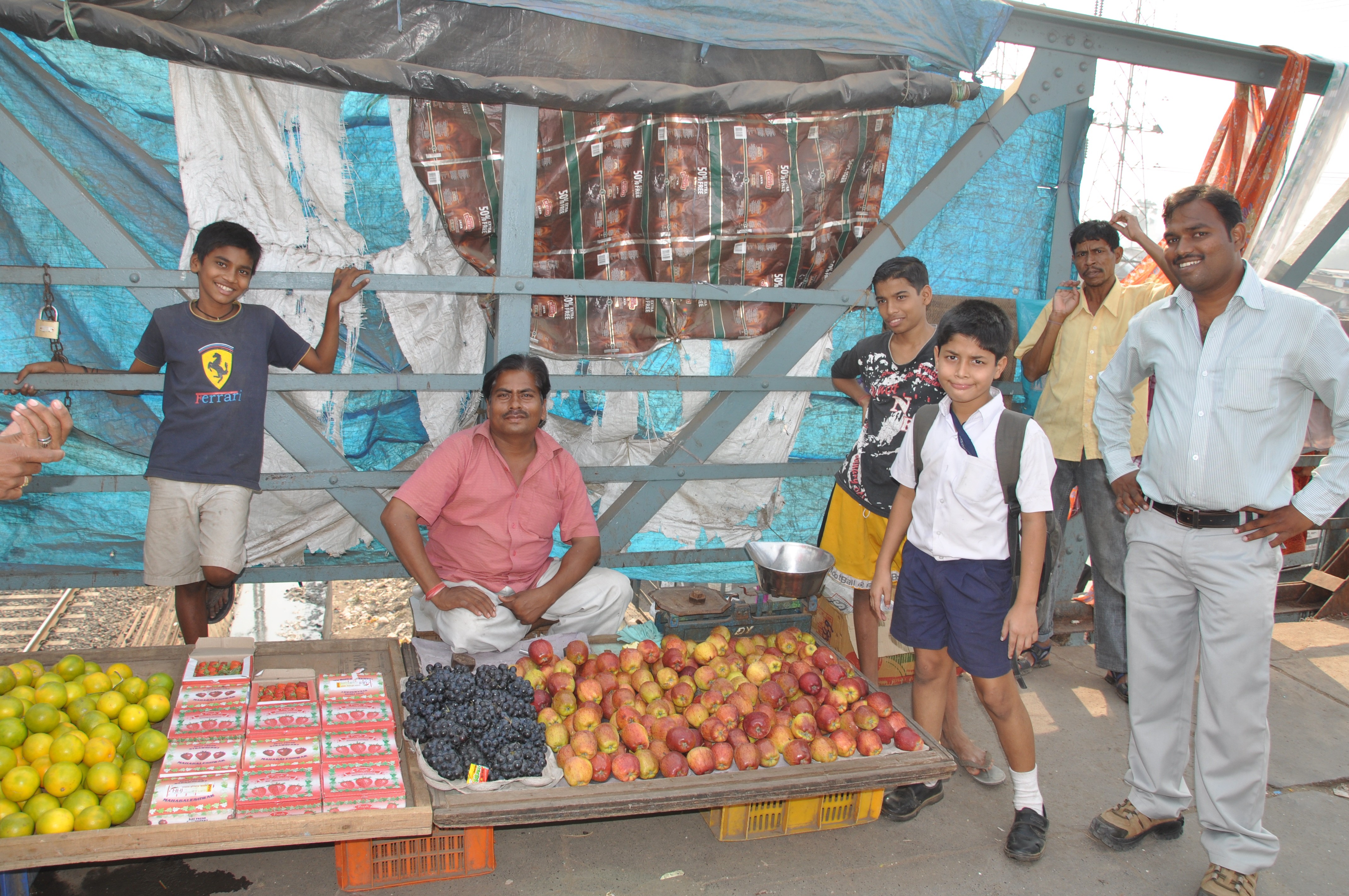
It's not all about the Business
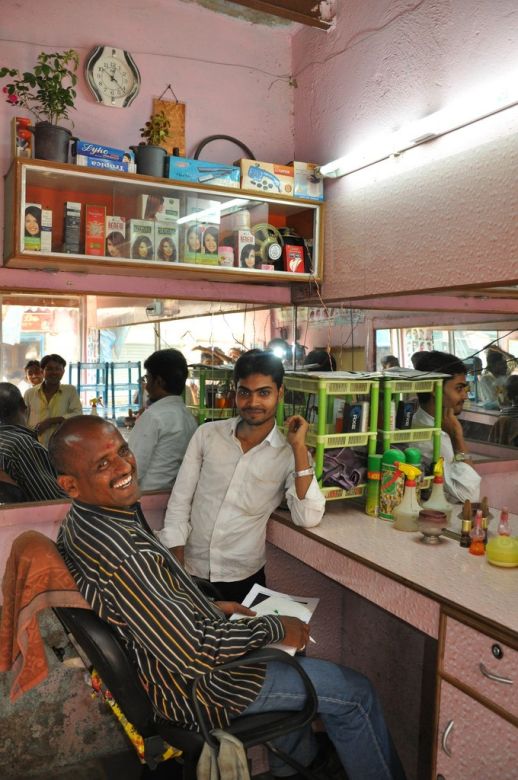
I came to Dharavi to learn about how people run their businesses here and to inquire if it is business that makes street life in Dharavi so intense. What I learned is that it is more than economic activities that makes this neighbourhood a community.
THERE`S BEEN A BRIDGE …
The commerce in Dharavi is flourishing, far from being in a state of economic crisis. You have no doubt about this, the moment you get up on a footbridge that connects Sion, a quiet (relatively speaking!) green, middle class area and Dharavi`s ferocious street life. Only the railway divides these two parts of Mumbai. It feels as if I´m crossing a border every time I get on that bridge. And the bridge itself says a lot about the city parts it connects. The pompous stairs on the Sion side give a panorama view over the neighbourhood while Dharavi seems to be literally swallowing its twisted stairway into its labyrinth of streets and spaces.
Dhobi Ghat, a small basin where the laundry from all of Dharavi is done basically touches the bridge. The laundry is dried on the bridge itself or even on the railway tracks. No space is wasted.
Business starts on the bridge already, where street vendors have to pay 10 rupees a day for using a spot. The trains rumble to and fro making so much noise that me and my translator, Shyam, have to wait while every train passes before being able to talk to some of the vendors
I can`t stop thinking about the bridge as Dharavi`s Ponto Veccio. One of many fashions in Stockholms city planning today is the idea of building on/under and reviving Stockholms bridges in desperate search for centrally located areas to develop. And of course to make those “city connectors” more citylike and livable too . Well, someone has already done it…
SPACE AND TIME
It`s about 10 to 15 minutes` walk to get to the URBZ office from where I`m staying. To reach Dharavi I had to take about 30 minutes` long, trying taxi rides through the mega intense city of Mumbai. An experience in itself and not that I´m actually complaining.
Several people I talked to in Dharavi work and live within the same space. What is a shop, a workshop and a living room during the day becomes a bedroom during the night. Zoning of housing spaces doesn`t really work here.
Salim Khan is 25 years old and runs a hair studio for men and children. Apart from hair cut, dying, highlights and shaving you can get hair massage and straightening done here. You can even get a face massage, face bleach or a facial. The prices are regulated by Dharavi´s barbers` union. Salim gets most of the customers on Wednesdays and Sundays. He has learned the trade from his father who also was a barber. He comes from a village in UP, a state in northern India and came to Dharavi 2001. To be able to rent the space he had to make a deposit of 20000 rupees and he´s paying 2500 rupees in rent per month. Salim lives in the same space where he works. Once a week he goes to visit his family, a wife and a son, who rent a place in Govandi, 6 km from Dharavi. He wishes his family could join him here in Dharavi.
The phenomenon of working from home or from a café or other public space has recently become quite popular in Sweden. A friend of mine works for an architectural office where they test the boundaries between private and public space on themselves. They´ve created a sort of a contact hub and share the space they work in with an office space to rent and a café. This week they´re going to share space with a design boutique. In some Swedish offices you don`t even have a space that is designated to you, you choose the one that is available at the moment. Looks like its high time to look over our new post-industrial lifestyles and see what it means for us architects.
Back to Dharavi. Those who have their businesses at MG Road and live somewhere else usually have their homes within a short walking distance. Dharavis´ fully pedestrian small-scale mixed-use environment sets standards for how time is perceived. It seems like a distance longer than a 10-15 minutes´ walk means “far away” for many people I´ve talked to. I try to think out what our perception of time and distance in Europe is. What comes to my mind is that the way many cities I´ve been to are built are made so we “use” them with a car or with other transport means. To have walking distance as a reference would simply not work.
Viresh Ravirala, 43 has been running the shop for 15 years and inherited it from his parents. The shop is strategically located close to where MG Road meets one of the streets heading to 90 Feet Road, Dharavis biggest and most expensive street. Viresh works 12 hours a day to support his family, a wife and three children. He lives with his family outside Dharavi.
IT´S NOT ALL ABOUT BUSINESS
I came to Dharavi to learn about how people run their businesses here and if it is those businesses that makes street life in Dharavi so intense. What I learned first after moving in here is that Sion station never sleeps. The world`s longest train always passes by while I´m trying to have conversations with some of Dharavi`s entrepreneurs. Then as soon as the train is gone I hear a voice calling for an evening Muslim prayer. Muslims, Hindu, Christians and people of many other religions live together here in Dharavi. In the morning I met pastor Yesudas Talwar who was distributing leaflets for a free eye check-up in a hall at MG road that is used for different kinds of local activities, like for example capoeira lessons for children. Pastors brother, Shantaram, does the check-up. A pair of glasses can be bought at the same time for one third of a market price. Yesudas was expecting about 40-50 people to come and get their eyes checked today.
As I write this, an electrical pipe has broken down and MG Road is getting opened on one side of the street which makes me jump over a hole in the ground since I want to talk to sellers on that side. Suddenly I hear singing coming from a street corner. It is the workers who are moving the pipe and singing. The pipe is moved while several guys get involved, one of them giving commandos. Work and laughter. Together. Maybe another indication of the elusive sense of the community?
This post (text, photos, drawing) was authored by Monika Rudenska, an architect and urban planner currently researching economic activities on MG Road with URBZ.

